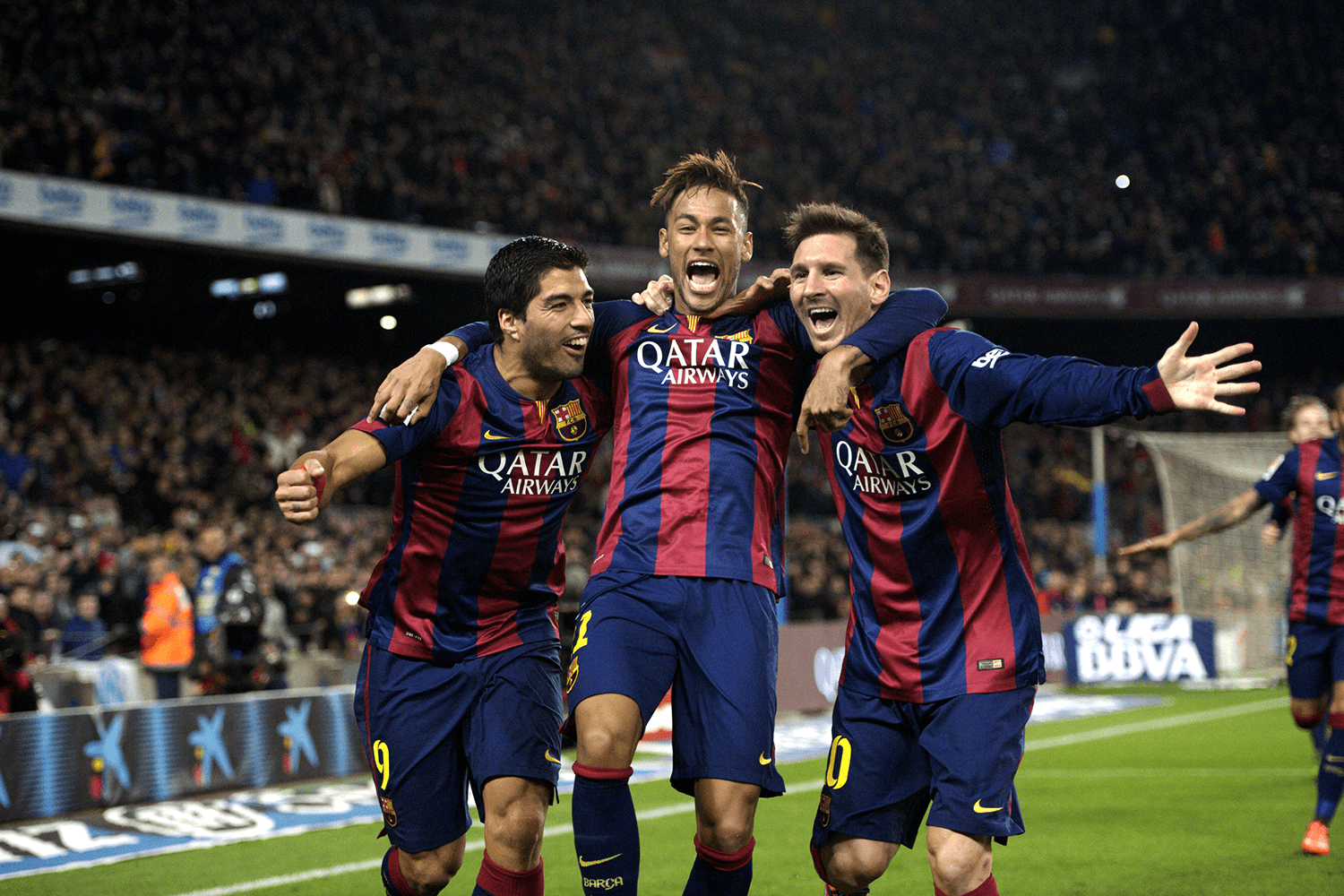The landscape changed for Barcelona after 2011-12, with Pep Guardiola leaving and his assistant Tito Vilanova taking over. It didn’t stop the team racking up 100 points and winning another title and for Messi the goals kept coming. While 2011-12 was the great season for sheer volume (50 goals total), Messi actually scored more non-penalty goals the season after, 42 to 40, and with a remarkable profile.
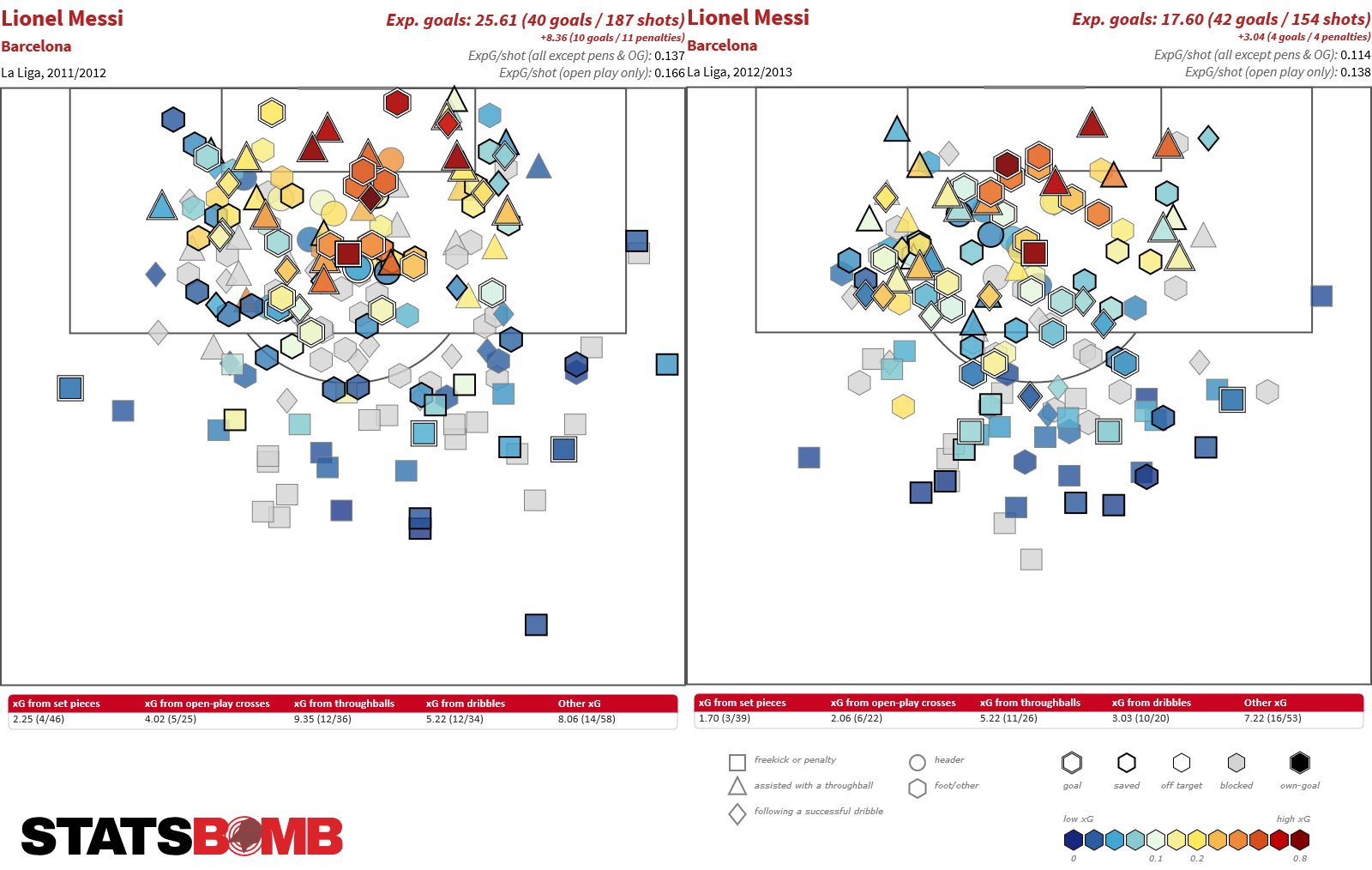
The differences season to season are fascinating. While 2011-12 looks like the perfect shot map from a locational perspective, aspects of 2012-13 are very different. Even in simple terms, Messi finished 27% of all his shots in 2012-13, up from an already fantastic 21% the season before. Location is where we see the greatest differences though, During 2011-12, 29 of 40 of Messi’s non-penalty goals were scored from with 15 yards of the goal, the following season just 19 of 42 were scored from this range. While 2011-12 had the sheer volume, 2012-13 was a remarkable finishing season, both for Messi and Barcelona in general. Take a look at this chart, Messi’s shots in 2012-13 from over 15 yards with free kicks excluded (he scored three of them too):
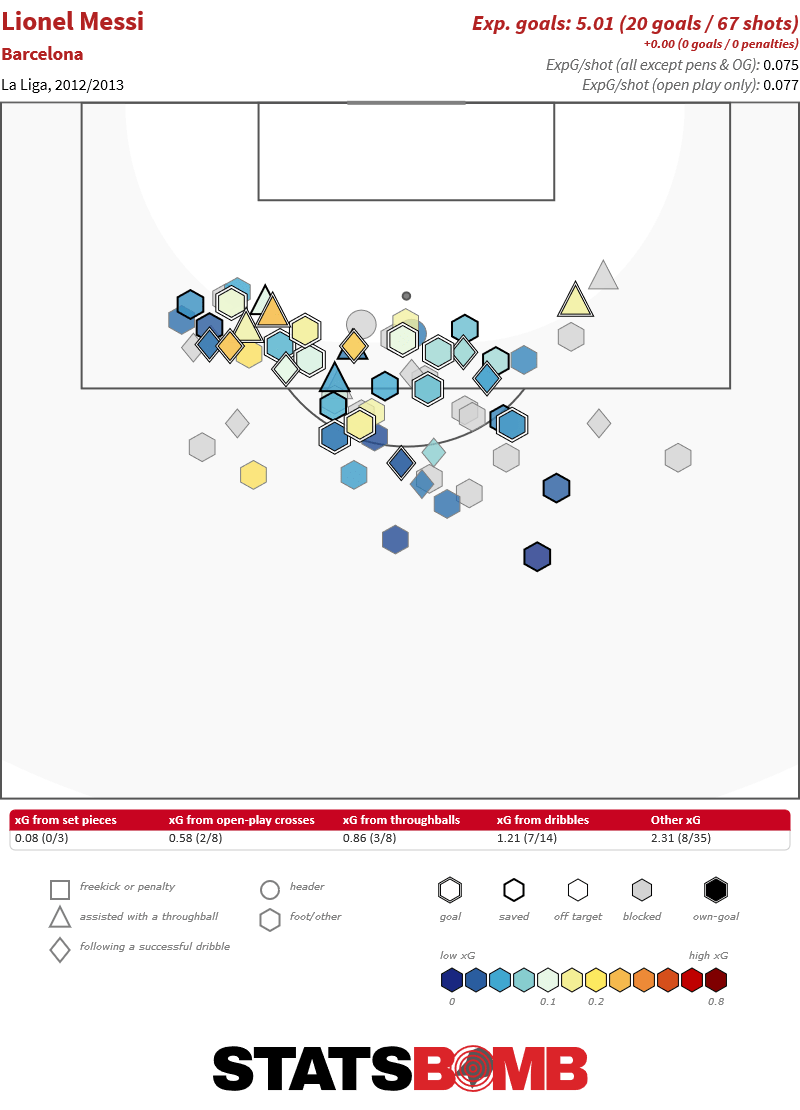
If we were to drill down to the exact part of Messi’s career in which his finishing skill showed itself to the maximum degree, then this run of shots is probably about the best slot we can find. In raw terms, Messi scored 20 goals from 67 non free kick shots at a distance of over 15 yards during 2012-13, that’s a conversion rate of 29.8%. That alone would place him third in the big five leagues for 2018-19 in terms of raw shot conversion of all shots (Paco Alcácer and Edinson Cavani would be ahead) but we have removed all of Messi’s shots within 15 yards of the goal.
For expected goals in this zone, he scored 20 against an expectation of 5. It’s simply as good as it gets, and even Messi can’t be expected to replicate his own absolute and ludicrous best. He scored nine times alone from that zone just inside the box to the left. Watching the goals back, time and again he shot quickly and accurately into the corner of the net. This was a master of his craft, on a hot streak and at his best.
One of the curious aspects of Messi’s career at this juncture was the perception around him. He scored fewer goals under Gerardo Martino in 2013-14 and there was even speculation from the fan base that Messi was saving himself for the 2014 World Cup. It’s genuinely hard to find evidence for that in the numbers, it’s just his insane finishing streak of the seasons before had come back to far more normal levels.
Even Messi, the premium finisher of his era, had seasons where his expected goals and actual goals ran together, see here:
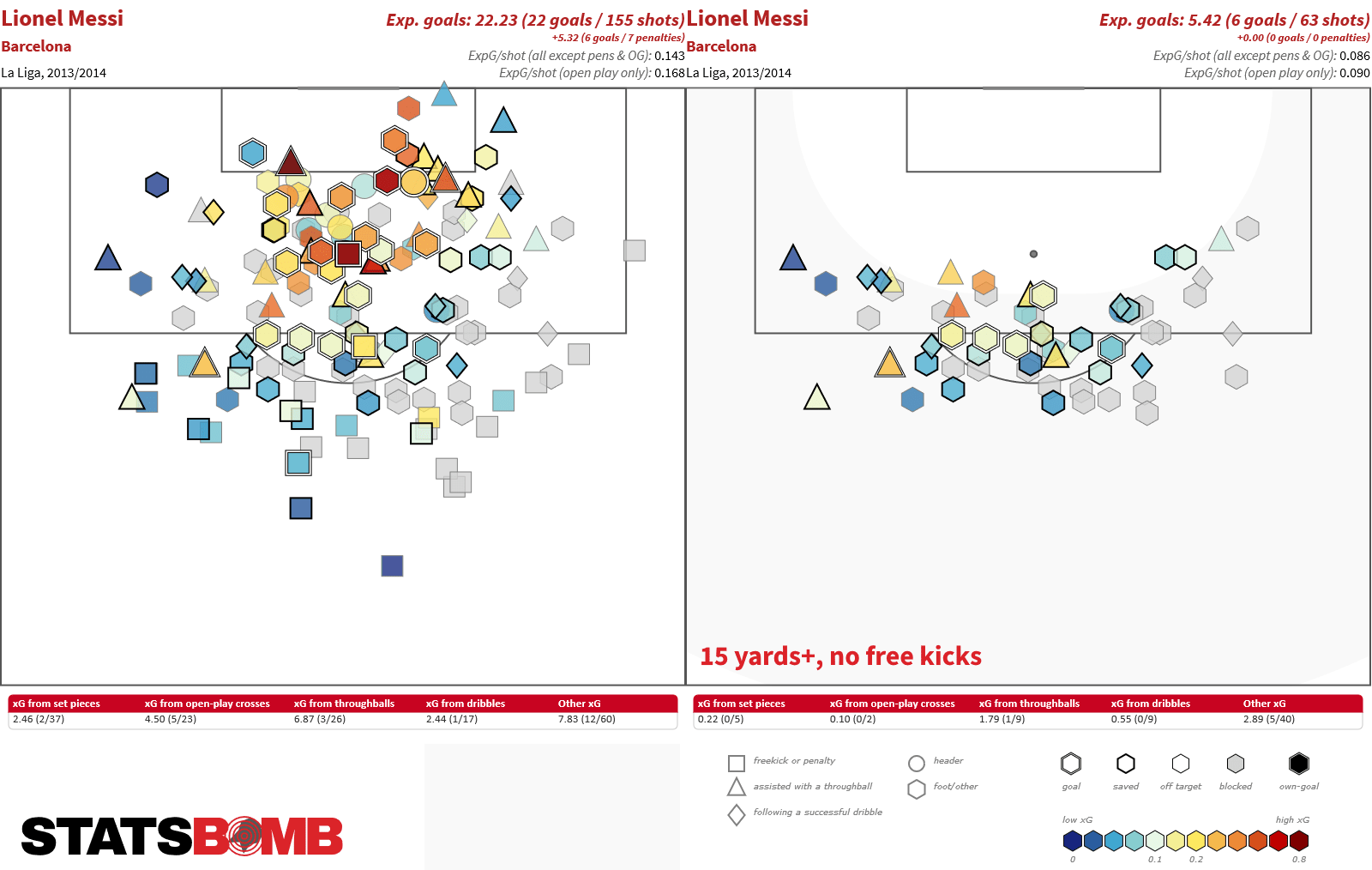
Ironically, he even remained over expectation in that zone we identified for 2012-13, having scored six compared to an expectation of 5.4.
If we look at Messi’s general goal contribution compared to expectation (so factoring in key passes and assists too, for a broader take), we can see just how odd 2012-13 was, and how consistent Messi has been otherwise, once he rose to his peak levels:
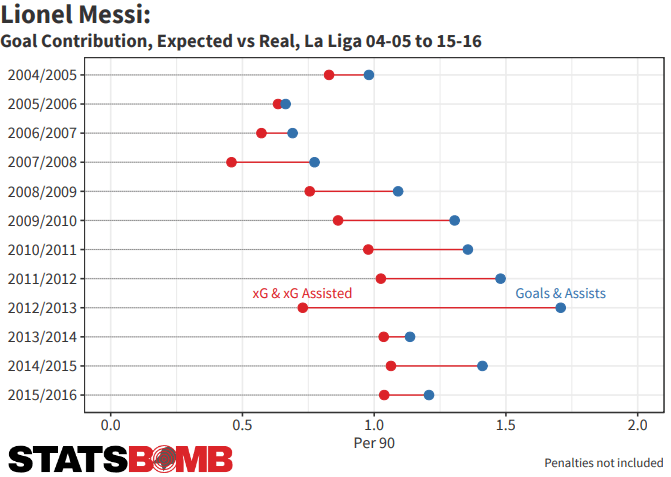
We can also see from this chart the consistent progression towards a peak that started when Guardiola arrived and hit a standard that has scarcely deviated as Guardiola departed. The last three seasons, not shown, see him remain roughly at these levels. Messi, in and of himself, is showing little propensity towards decline even in his 33rd year.
If we look at the evolution of Messi’s passing metrics specifically during this period we notice a degree of stability similar to that which we see from his attacking metrics, but some interesting spikes as we move towards the back end of this segment, and the success of the “MSN” trio of Messi, Neymar and Luis Suárez:

We see 2015-16 in particular, a spike towards xG Assisted that isn’t provided by a rise in key pass volume. There were certainly periods in that season, earlier rather than later, in which the football Barcelona were playing was of an extremely high standard, and in part, Messi’s enhanced creative role reflected that; we see more sucessful passes into the box and more throughballs than ever before, while essentially pass volumes across the pitch and high up remain fairly constant.
His xG contribution in particular, skewed more towards creation (xG Assisted over pure xG) than ever before in 2015-16, even though the volumes were fairly consistent. Across nearly the whole of the 2010s Messi has been a four to five shot a game man, while creating around two open play key passes a game, but as time has moved on, his starting role has drifted back towards the right flank, most obviously because of Suárez inhabiting the centre.
-James
That’s our look at Messi’s first four post-Pep years, but of course it’s only one half of the story. As you’re reading this the data used in this article (2011/12 – 2015/16) has been released. Just go and grab it as you usually would and voila, another batch of seasons to play around with. That means a decade of Messi’s career, from baby prodigy to the best in the world, is sitting out there for any variety of longitudinal analysis you can conjure up. All free to download. Just visit our Hub (if you haven’t already) and then go pull the data via your program of choice.
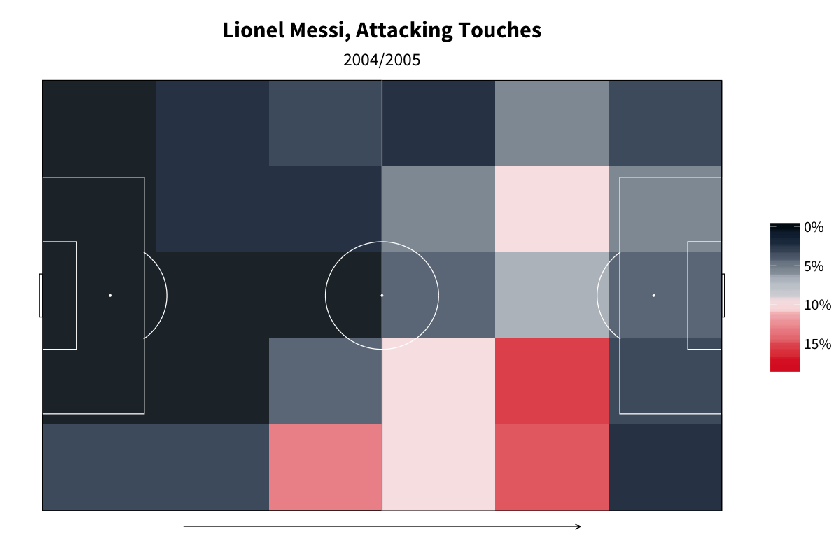
And of course, we’ve also got R primers in English and Spanish that are available if you’re feeling tentative about diving in. Data manipulation is intimidating at first but hopefully they should make taking the plunge a little less overwhelming. Again, we’re releasing this data to see what other people can do with it. No doubt there are countless little interesting ideas rolling about in the minds of StatsBomb readers. We’re just trying to give you the tools to make them a reality on your own.
Please do dig in and have fun. As always, be well and have great days.
